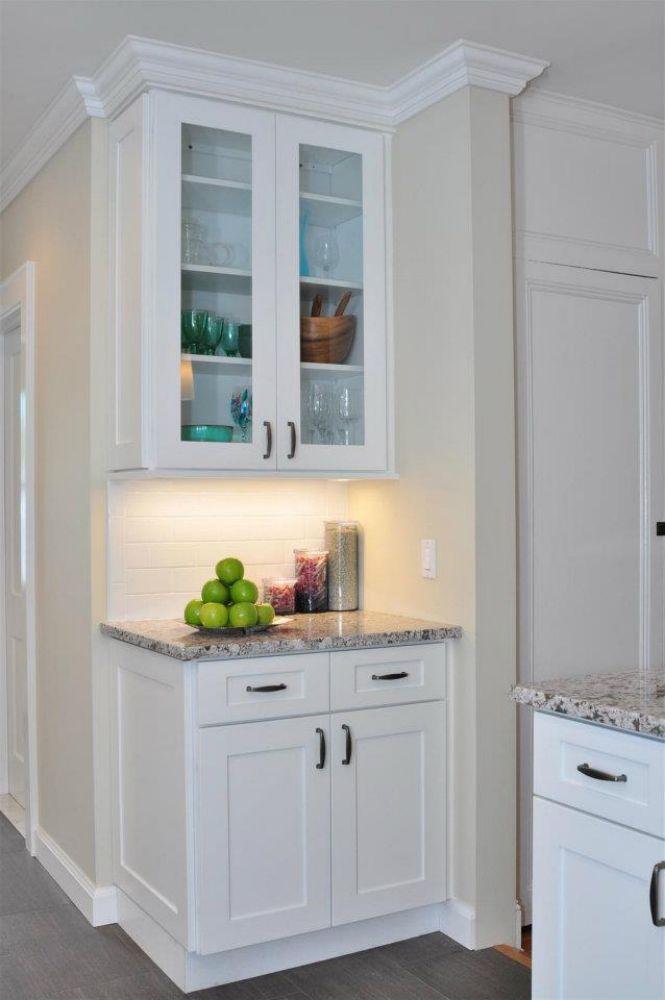Designing a cohesive home interior often involves blending multiple materials, finishes, and flooring types. When installing Forevermark Nova Light Grey cabinets in a space where the floors differ from one room to another, a seamless transition becomes essential for maintaining both visual harmony and structural balance. A well-planned transition not only enhances the flow between rooms but also protects the edges of flooring materials from wear and tear.
This article will explore design strategies, practical tips, and stylistic ideas to ensure smooth transitions between different flooring types when incorporating Forevermark Nova Light Grey cabinetry into your home design.
Understanding the Role of Transitions in Open-Concept Spaces
In modern homes with open layouts, flooring transitions serve as subtle visual dividers between functional zones—like kitchens, dining rooms, and living spaces. When Forevermark Nova Light Grey cabinetry defines one area, such as the kitchen, transitioning into adjoining rooms requires careful color and texture consideration.
Grey cabinetry has a neutral yet sophisticated tone that pairs well with both warm and cool hues, making it flexible for bridging materials like wood, tile, or stone. However, poor transitions can disrupt the visual flow, making spaces appear fragmented. Proper alignment, threshold design, and color coordination are key to maintaining consistency throughout the home.
Choosing the Right Transition Strip or Molding
Transition strips are often used to join two different flooring types at doorways or between rooms. The best options depend on both the material and elevation of each floor surface.
-
T-Molding: Ideal for joining floors of equal height, such as laminate to laminate or hardwood to hardwood. A neutral or matching tone complements the grey cabinetry.
-
Reducer Strip: Used when one floor is higher than the other, creating a smooth slope between materials.
-
Threshold or End Cap: Commonly placed at room entrances, these create a clean break while protecting the floor edges.
-
Metal or Stone Inlays: These can provide a decorative, contemporary touch that pairs beautifully with the elegant grey tones of the cabinets.
When choosing the transition piece, consider materials and finishes that blend effortlessly with Forevermark Nova Light Grey’s cool undertones. Brushed nickel or stainless steel details often work particularly well.
Coordinating Flooring Colors with Nova Light Grey
Color coordination plays a major role in creating balance. Forevermark Nova Light Grey cabinets work beautifully with both light and dark floors. If one room features warm-toned hardwood and another uses cool-toned tiles, the transition between them should visually bridge these differences.
A simple strategy is to choose a transition piece that picks up both tones—a grey-brown transition strip can help link cool cabinetry with warm flooring. For a minimalist look, match the transition strip closely with the lighter flooring material to keep attention on the cabinetry.
Balancing Materials Between Rooms
Forevermark Nova Light Grey cabinetry naturally draws the eye with its modern yet versatile appearance. To ensure transitions don’t distract from the cabinetry, maintain material balance throughout connected spaces.
For instance:
-
Pair Nova Light Grey cabinets with natural stone tiles in the kitchen and hardwood floors in the dining room.
-
Use a metal or wood-look transition that incorporates both materials to create cohesion.
-
Ensure flooring direction—like plank orientation—flows logically from one room to the next.
The goal is to make the transition feel like a design feature, not an afterthought.
Creating a Visual Flow with Lighting and Trim
Lighting can dramatically affect how transitions appear. Under cabinet lighting, pendant fixtures, and ambient sources all influence how colors and materials interact. Warm lighting can soften the contrast between differing floors, while cool lighting can highlight the modern appeal of grey cabinetry.
Trim and baseboards can also help unify spaces. Using the same trim color throughout the connected rooms ties the design together even if the floors differ, ensuring a cohesive visual path from one area to the next.
Transition Placement and Layout Planning
Before installation, consider where transitions should occur. Ideally, transitions should align with doorways or natural divisions within the space. For example, placing a transition strip beneath a door creates a logical separation between rooms without interrupting the visual continuity when the door is open.
In open-concept kitchens, transitions may occur where cabinetry ends or islands begin. Proper planning during layout design prevents awkward breaks and ensures the flooring materials meet cleanly beneath cabinets and furniture.
Incorporating Patterns and Texture to Complement the Cabinets
Textured flooring and patterned transitions can add depth and personality to rooms featuring Forevermark Nova Light Grey cabinetry. Because the color grey serves as a neutral anchor, it allows for creative flooring combinations such as:
-
Patterned tiles in kitchens transitioning into smooth wood planks in living spaces.
-
Subtle geometric transition tiles that complement the cabinetry’s clean lines.
-
Contrasting grout or trim to highlight the shift without overwhelming the eye.
Texture adds warmth and balance to grey interiors, especially when paired with soft textiles or natural accents.
Maintaining Functionality and Durability
Beyond aesthetics, transitions protect flooring edges from damage and account for material expansion and contraction. Proper installation prevents warping or gaps over time. When working with different materials—like tile meeting wood—it’s crucial to leave small expansion gaps hidden beneath transition strips.
Durability also depends on choosing the right adhesive or fastener for each flooring type. Coordinating with professional installers ensures a long-lasting and safe result, particularly in high-traffic areas.
Enhancing Resale Appeal with Seamless Transitions
Buyers often appreciate homes with cohesive design continuity. Smooth, stylish flooring transitions that complement Forevermark Nova Light Grey cabinetry contribute to a sense of flow and spaciousness.
When potential buyers or guests walk through your home, the transition between floors should feel natural and intentional, not abrupt. Grey cabinetry’s versatile tone provides a neutral backdrop for almost any flooring palette, which increases both aesthetic and market value.
Why Choose Us?
At My Kitchen Cabinets, we specialize in providing high-quality cabinetry that enhances both function and beauty in every home. Our Forevermark Nova Light Grey collection offers a refined balance between durability, modern elegance, and timeless appeal.
We understand how important it is for homeowners to achieve seamless transitions between rooms and materials. Our design experts can guide you in selecting cabinetry that harmonizes with your flooring choices, lighting styles, and room layouts—ensuring your space remains both practical and visually stunning.
From design consultation to installation, we focus on craftsmanship, consistency, and long-term satisfaction, helping your home achieve a flawless flow between every space.
Conclusion
Transitioning between rooms with different flooring types while using Forevermark Nova Light Grey cabinetry requires a thoughtful blend of design, color coordination, and craftsmanship. By considering layout, material balance, and lighting, homeowners can create cohesive spaces that feel fluid and inviting.
The key lies in blending function with aesthetics—ensuring durability while maintaining an elegant look that complements every part of the home. With attention to detail and expert planning, your flooring transitions can enhance both the visual harmony and the overall value of your home.
Frequently Asked Questions
Q: How should you transition Forevermark Nova Light Grey between rooms with different flooring?
A: Use color-coordinated transition strips, consistent trim, and aligned layout planning to create seamless flow between spaces while protecting flooring edges.
Q: What type of transition strip works best between tile and hardwood floors?
A: A reducer strip or threshold piece is ideal for differing heights, ensuring a smooth and durable transition that complements the cabinetry’s color.
Q: Should the transition color match the flooring or the cabinets?
A: It depends on your design preference. Matching the transition to the lighter flooring keeps the look subtle, while aligning it with the cabinets emphasizes contrast and style.
Q: How do lighting choices affect transitions with grey cabinetry?
A: Warm lighting softens contrasts between materials, while cool lighting enhances the sleek and modern tone of the cabinetry and flooring transitions.
Q: Is professional installation necessary for flooring transitions?
A: Yes. Professional installation ensures proper alignment, material expansion gaps, and long-lasting results that maintain your home’s cohesive design.

